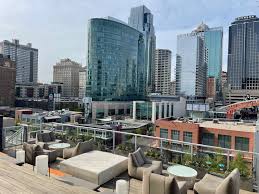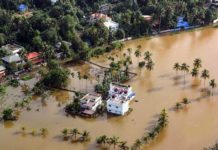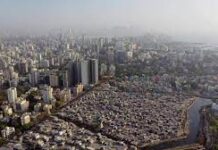Today, the world has collectively started to urbanise with the use of advanced technologies. Daily life has become more convenient for most people, however, in the long run, the overwhelming industrialization can have detrimental effects on the earth itself. As in order to flourish and expand the cities, there has to be an environmental sacrifice to be made. Generally, Urban sprawl and Sustainable cities are like oil and water, which means that both can not co-exist together. Hence, the compromise has to be made to the point where both perspectives are somewhat relevant.
The term “Urban sprawl” is defined by the rapid expansion of low-density urban development. Low density refers to relatively less populations within specific boundaries, for instance, a spacious house with one household can be referred to as low density while a condominium with many households can be referred to as high density.
So, it can be said that urban sprawl can simply offer relatively cheap cost of living and trigger more migrations. Hence, urban sprawl households tend to be satisfied living in more private, cheap and spaced out houses. But the downsides of sprawl are that it completely destroys the ecosystems, habitats and environments. Again, urban sprawl indicates the areas with low population density, meaning vast unused/reusable land has to be consumed, which is not really healthy for the earth in the long run.
On the other hand, sustainable cities symbolise the coexistence of natural beauty and artificial technology. The significant difference between sustainable cities and urban sprawl is the presence of environmental responsibility behind the exponential urbanisation. For instance, Singapore is often regarded as the most sustainable city in the world.
Singapore, due to the restricted size of the land, is filled with tall skyscrapers and condominiums and as Singapore can not produce energy independently, they put tremendous effort in preserving as much energy and environment as possible. However, Singapore is also ranked top as one of the most developed countries in the world as well while taking care of the limited natural resources. This greatness is approached by three key principles: Long-term strategic planning, Prioritised investment in innovative solutions and Active partnerships/collaborations.
In order to achieve the middle ground between both urban sprawl and sustainable cities, it is very important to plan ahead in time as Urban sprawl is a short-term answer and Sustainable city is a long-term answer. Urban sprawl may offer momentary benefits like lower cost of living, pulling factors and increased humanization but it comes with the environmental long-lasting sacrifices.
While a sustainable city may display slowed down growth, however, in future the preserved environments and conserved energy can provide mutual benefits to everyone. Overall, a country like Singapore is a prime example of being capable of being beneficial in both now and the future and there are lots of lessons to learn from the real life successful examples of strategies, mindsets and approaches.
For instance, due to Singapore being located in a closed loop, Singapore has switched from fossil fuels to natural gas since the early 2000s already. Natural gas is located right in between renewable and non-renewable and yet, the cleanest form of power and energy as of now. Therefore it proves that Singapore had been contemplating the futures all the time and investing in right and promising sources.
This ability to predict the situations in the future is one of the most important tools for people to have a balance between benefits now and future, or urban sprawl and sustainable cities. Furthermore, Singapore has been doing very well in managing the foreign relationships. As Singapore was one of the few countries where domestic productions of resources were almost impossible, they were forced to cooperate with the foreign rich countries.
But fortunately, the Singapore government has been one of the most politically stable administrations in the whole world, thus they were able to make beneficial treaties and build win-win relationships with many other resourceful countries and organisations. This capability of fully keeping political and economic stability under control is phenomenal and important to build sustainable countries.
In conclusion, although balancing exponential urban growth and environmental responsibility is a complex task, there is real life example of being successful at that task like Singapore and there are several pieces of advice that other countries can assimilate from. By outlining and analysing the consequences of the actions on both short term and long term are necessary while keeping in touch with potential collaborators who can contribute to support and prevent environmental crises in near future.
By: Yuki Matsumoto
Write and Win: Participate in Creative writing Contest & International Essay Contest and win fabulous prizes.
















